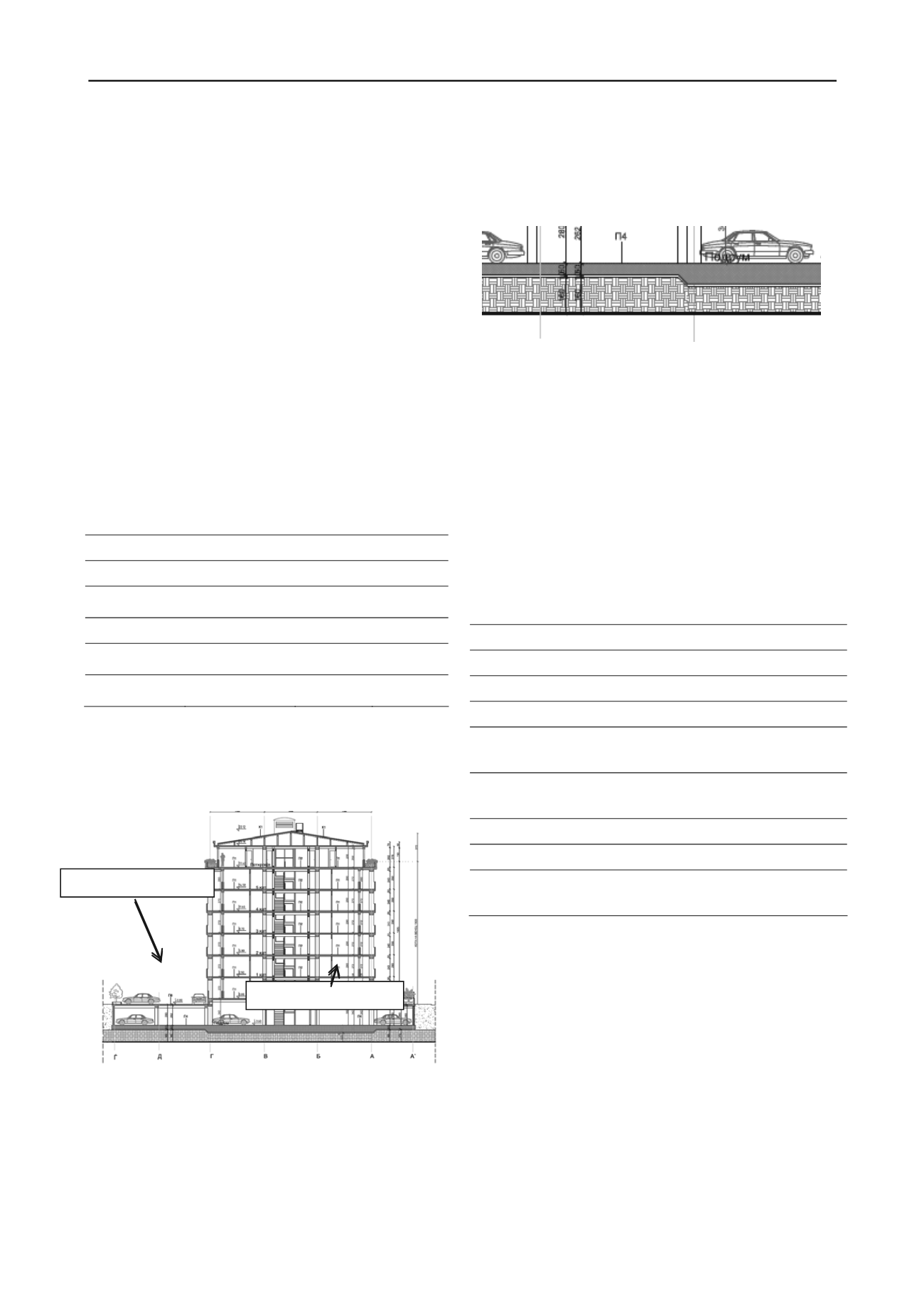
2470
Proceedings of the 18
th
International Conference on Soil Mechanics and Geotechnical Engineering, Paris 2013
sediment nature. In order to get precise geotechnical profile of
the ground, extensive geotechnical field investigations were
conducted. On the other hand, soil samples were taken for
laboratory testing. With such extensive scope of field
investigations, clear view of the ground profile was obtained.
Based on the performed field investigation works, it was
concluded that the site is composed of different layers of
sedimentary soils. With foreseen depth of the boreholes, no
bedrock was detected. On this site there is vast variety of soil
materials, from gravels and sands to silts and clays. Because of
the high heterogeneity of the ground profile, layers are grouped
into two extinguishing layers. The surface layers are low
plasticity clays and clayey sands, which are highly compressive
and they are present up to approximately 2.0 m from the
surface. While the next deeper layer is clayey sand with higher
compaction than the previous layer, and they are present up to
10.0 m from the surface. It is supposed that this second layer
continues up to depth for which loading stresses have impact on
the settlements.
According to the conducted field and laboratory tests,
present soil materials are loose and they have very poor strength
properties. In addition, the level of ground water table is very
high, approximately 1.0 m from the ground surface, because of
the nearby Ohrid Lake.
Table 1. Geomechanical properties
Soil
Fill Material
CL/SFc
SFc
g
(kN/m
3
)
22.0
18.4
18.5
c(kN/m
2
)
0.0
15.0
10.0
f
(
0
)
35.0
10.0
20.0
Mv (kPa)
80000.0
5000.0
10000.0
SPT
/
4
13
Considering all these facts, it is obvious that ground
improvement is necessary under the foundation of the new
construction. Moreover, the problem with the settlements is
inevitable, so the serviceability of the construction is also an
important issue.
Figure 2.Adora building – cross section
4 CONSTRUCTION DETAILS
The Adorabuildingis built on the sitewhich is very close to the
Ohrid Lake. The superstructure of the building has 5 floors and
the substructure has 1 floor (see Figure 2). The substructure is
extended out of the superstructure and it is actually a parking
lot. The size of the superstructure in plan view is 52.0x22.0 m,
and the total size of the building (including the extensions of the
substructure) is 69.0x41.5 m. The foundation slab under the
superstructure is 0.9 m thick and on the extension parts it is 0.5
m thick.The contact pressure transferred on the subsoil varies in
range between 100 kPa (on cross-sectionsin the middle of the
building) and 20 kPa (on cross-sections in the extensions).
Figure 3. Cross section of the foundation structure
5 THE SOLUTION
As it was mentioned before, the improvement of the subsoil was
done by means of soil replacement and usage of geosynthetic
materials.
Because of the foundation level of -1.5 m from the ground
surface and the depth of soil replacement of 2.0 m, total of 3.5
m deep foundation pit was excavated. The excavation pit was
done by constructing2:1 slopes. In addition, dry conditions for
execution of the construction works in the excavation pit were
ensured by dewatering the excavation by extraction wells. On
the other hand the excavation pit had greater dimensions in plan
view, 2.0 m greater than the contours of the foundation slab.
Hence the loading stresses can be spread in the fill material by
angle of max 45°.
Table 2. Properties of the geotextile
Raw material
PP multicolored/PET
Method of production
Mechanically bonded
Weight
≥ 300 gr/m
2
Thickness under 2 kPa load
≥ 3 mm
Ultimate tensile strength
Longitudinal ≥ 4.0 kN/m
Transversal ≥ 7.5 kN/m
Strain at ultimate tensile
strength
Longitudinal 120% (±40%)
Transversal 80% (±40%)
CBR puncture resistance
≥ 1300 N (-300 N)
Opening size O90
0.10 mm (±0.02 mm)
Water permeability index
normal to the plane
85 x 10-3 m/s
(-15 x 10-3 m/s)
Fondation slab 0.5 m
5.1 Geotextile
Fondation slab 0.9 m
At the bottom of the excavation pit, geotextile was used to
ensure separation of the fill material from the subsoil. By the
separation, it is meant that the geotextile will prevent mixing of
the different soils, but it will enable complete water
permeability, so with this, complete preservation of the
properties of the later placed fill materials will be ensured. Used
geotextile has the physical and mechanical properties, listed in
the Table 2.
The geotextile was placed all over the bottom of the
excavation pit as well as on the excavation slopes. The overlap
oftwo adjacent panels is 60 cm, and it completely wraps the fill
material up. Used geotextile with the properties given in the
Table 2 has the ability to withstand burst and puncture, and has
enough tensile strength to serve a separation function, without
being destroyed.


